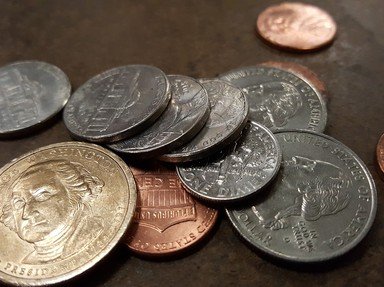Quiz Answer Key and Fun Facts
1. A nearly continuous series of large cents made by the US Federal Mint can be found with nearly every year from 1793 until 1857. Which would be the only date missing from such a series?
2. In comparison to late 20th century coins, how large was a US large cent?
3. When US large cents were made, which metal was purposely mixed with copper in the planchet (coin blank)?
4. Three distinct designs for the US large cents were minted in 1793. Which was NOT one of these designs?
5. Which word or phrase was most commonly seen on US large cents?
6. Which design was NOT used on US large cents in the 19th century?
7. How many US cities contained mints where US large cents were minted?
8. Who did NOT design a version of the US large cent?
9. How many stars can be found on the obverse of the Coronet US large cents?
10. What is generally identified as the reason (in addition to weight and size) that the US large cent type was replaced?
Source: Author
bernie73
This quiz was reviewed by FunTrivia editor
WesleyCrusher before going online.
Any errors found in FunTrivia content are routinely corrected through our feedback system.

